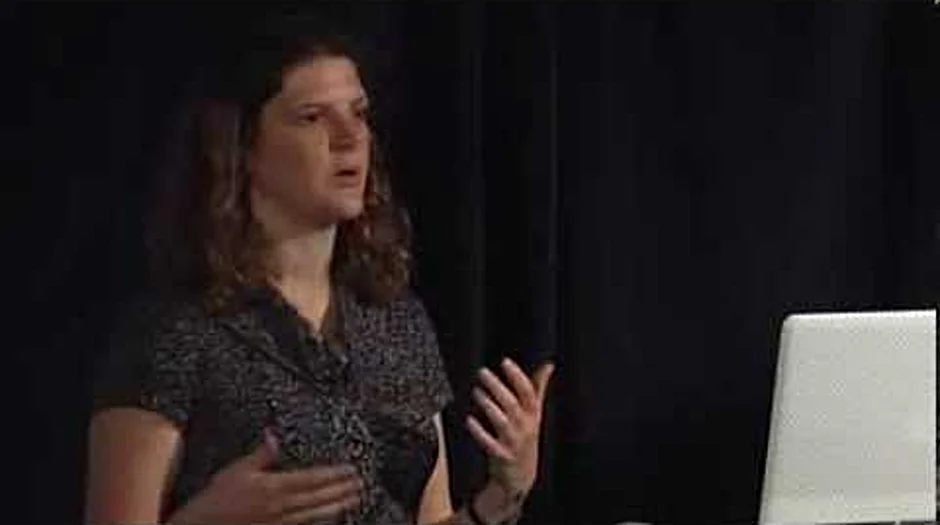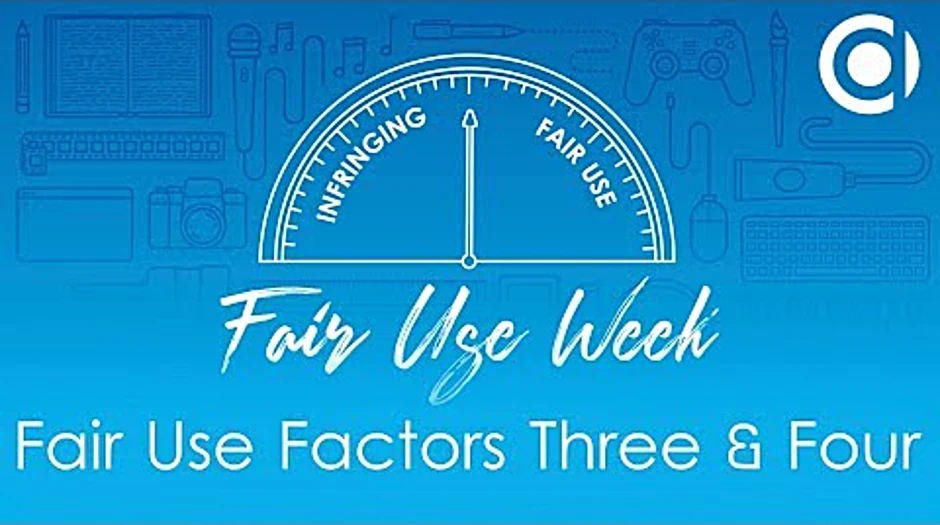Copyright 4 factors fair use [Solved]
Table of Contents
- What are the 4 factors of fair use?
- How much can you copy without infringing copyright?
- What is the main difference between copyright and fair use?
- What are the 6 exclusive rights of copyright?
- What are types of copyright?
- What are the parts of copyright?
- What are the 4 types of copyright?
- What are 2 examples of copyright?
- What are 3 examples of works that can be protected by copyright?
- How much content is considered fair use?
- How many factors are considered by the courts to determine fair use?
- What are the 4 fair use exceptions to copyright?
- What is not protected by copyright?
- What is the four factor test for fair use?
- What are the 3 elements of a copyright law?
- What are the five copyright laws?
- What are the five general terms of the fair use rule?
- What are fair use guidelines?
- What is the fair use clause in copyright law?
- What are the four factors that determine fair use quizlet?
Last updated : Aug 18, 2022
Written by : Hyun Broadhurst |
Current |
Write a comment |
What are the 4 factors of fair use?
- The purpose and character of the use, including whether such use is of commercial nature or is for nonprofit educational purposes.
- The nature of the copyrighted work.
- The amount and substantiality of the portion used in relation to the copyrighted work as a whole.
What are the 4 fair use exceptions to copyright?
Fair use of copyrighted works, as stated in US copyright law, “for purposes such as criticism, comment, news reporting, teaching (including multiple copies for classroom use), scholarship, or research, is not an infringement of copyright.â€
What is the four factor test for fair use?
The purpose and character of the use. The nature of the work. The amount and substantiality of the portion used in relation to the work as a whole. The effect of the use on the market or potential market for the original work.
What are the 3 elements of a copyright law?
The three basic elements of copyright: originality, creativity, and fixation.
What are the five copyright laws?
The five fundamental rights that the bill gives to copyright owners—the exclusive rights of reproduction, adaptation, publication, performance, and display—are stated generally in section 106.
What are the five general terms of the fair use rule?
Section 107 of the Copyright Act gives examples of purposes that are favored by fair use: “criticism, comment, news reporting, teaching (including multiple copies for classroom use), scholarship, [and] research.†Use for one of these “illustrative purposes†is not automatically fair, and uses for other purposes can be ...
What are fair use guidelines?
The term “fair use†designates the acceptable use of copyrighted materials without obtaining specific permission from the holder(s) of the copyright. Fair use is generally granted for the purposes of comment, criticism, research, teaching, and scholarship.
What is the fair use clause in copyright law?
Fair use permits a party to use a copyrighted work without the copyright owner's permission for purposes such as criticism, comment, news reporting, teaching, scholarship, or research. These purposes only illustrate what might be considered as fair use and are not examples of what will always be considered as fair use.
What are the four factors that determine fair use quizlet?
- Fair Use: purpose. Refers to the reason of the copyrighted work, including whether such use is for a commercial nature or is for nonprofit educational purposes.
- Fair Use: nature. Refers to the type of copyrighted work.
- Fair Use: amount.
- Fair Use: effect.
How much can you copy without infringing copyright?
You may use up to 10%, but no more than 3 minutes, of a single movie, TV show or video. You may use up to 10%, but no more than 30 seconds, of music and lyrics from a single musical work. You must purchase performance rights to hold a live performance of a copyrighted work.
What is the main difference between copyright and fair use?
Fair use only goes as far as being able to use it without making money off of it. A copyright gives you full ownership of the work, allowing you to claim it as your own and potentially make money off of it.
What are the 6 exclusive rights of copyright?
- Right of Reproduction. This is the most prominent right which is acquired after the copyright protection.
- Right to Distribute.
- Right to make Derivative Works.
- Right to Publicly Perform.
- Right to Follow.
- Right of Paternity.
- Sui Generis Rights.
- Private Copying.
What are types of copyright?
The US Copyright Office has five different application forms, depending on what type of work you want to register: literary, visual, single series, performing arts, and sound recording. Select the form that's closest to your particular work.
What are the parts of copyright?
To copyright something, only three elements are required: (1) fixation, (2) originality, and (3) expression. (1) Fixation: a creative idea must be locked in a permanent state. To protect a song, for example, it must be notated on paper or recorded onto tape or CD.
What are the 4 types of copyright?
- Public Performing Right. The exclusive right of the copyright owner, granted by the U.S. Copyright Law, to authorize the performance or transmission of the work in public.
- Public Performance License.
- Reproduction Right.
- Mechanical License.
- Synchronization License.
What are 2 examples of copyright?
- Architectural works.
- Sound recordings.
- Audiovisual works, including motion pictures.
- Artworks.
- Dramatic works, including any accompanying music.
- Musical works, including any accompanying words.
- Literary works.
- Choreographic works.
What are 3 examples of works that can be protected by copyright?
- Literary Works.
- Musical Works and Any Accompanying Words.
- Motion Pictures and Other Audiovisual Works.
- Sound Recordings.
- Pictorial, Graphic, and Sculptural Works.
- Dramatic Works and Any Accompanying Music.
- Pantomimes and Choreographic Works.
- Architectural Works.
How much content is considered fair use?
Contrary to what many people believe, there is no absolute word limit on fair use. For example, copying 200 words from a work of 300 words wouldn't be fair use. However, copying 2,000 words from a work of 500,000 words might be fair. It all depends on the circumstances.
How many factors are considered by the courts to determine fair use?
The four factors judges consider are: the purpose and character of your use. the nature of the copyrighted work. the amount and substantiality of the portion taken, and.
What is not protected by copyright?
Not Protected by Copyright: Titles, names, short phrases and slogans; familiar symbols or designs; mere variations of typographic ornamentation, lettering or coloring; mere listings of ingredients or contents.

Check these related keywords for more interesting articles :
How to locate a patent
Why is tenderstem trademark
How to write brand vision
It for intellectual property management
What is an intellectual property policy
Why intellectual property law is important
Should trademarks be amortized
How to trademark your work
Can you trademark a phrase uk
How to get brand evangelist
Intellectual property office europe rechnung
How to patent a vaccine
How to trademark a production company name
How to patent mobile app in india
Trademark search philippines wipo
Did you find this article relevant to what you were looking for?
Write a comment
Comment by Cecil Adib
four factors must be weighed on a case-by-case basis to determine whether a particular use of a copyrighted work qualifies as a fair use under the law in video 2 of this series we discussed the first two factors the purpose and character of the use and the nature of the copyrighted work factor three considers the amount and substantiality of the use this factor addresses how much of the protected work is being copied both quantitatively and qualitatively to achieve the intended purpose use of a whole work is rarely a fair use by the same token copying a small portion of a work is more likely to be a fair use unless that portion is considered to be the heart of the work for example one case determined that when a documentary filmmaker used clips of iconic Elvis Presley performances this use failed under the third factor test because the filmmaker had copied the heart of the work the fourth fair use factor considers the effect of the use on the actual and potential markets for the protected work primarily if a new use is seen as a substitute for the original work this will disfavor a finding of fair use under the fourth factor even if the new use is modest and not itself harmful to the market for the protected work it may still not qualify as a fair use if a court finds that harm is likely to result from the use becoming more widespread also the potential harm does not need to occur in a market that the copyright owner is currently exploiting this factor considers any potential markets that might reasonably be available to the copyright owner regardless of whether the copyright owner has chosen to enter that market this analysis recognizes that copyright embodies a bundle of Rights that are not protected on a use it or lose it basis finally it's important to note that if potential market harm is caused by criticism comment or parody these uses generally meet the overall intent of fair use and will not be viewed as harmful to the original work under the fourth factor to learn more about fair use and copyright in general visit copyright Alliance dot org you
Thanks for your comment Cecil Adib, have a nice day.
- Hyun Broadhurst, Staff Member
Comment by Rodney
one of the really important exceptions that we have is the fair use exception and the and fair use really is the right to use copyrighted content without permission in certain circumstances you know and there are obvious you know limitations to how much you can use and why okay and there's four factors you know so it's a four-factor multi-part test and the first factor is what is the purpose and character of the use we will really get at the heart of that factor because it is the most important it's why are you using the copyrighted content that you are using a sub factor under this is whether it's commercial or not we'll also talk a lot about that and then the second factor is what is the nature of the original work that means what the thing that you want to use is it a newspaper article is it a phone book is it something that's copyrightable but or maybe a recipe you know things things fall on a different spectrum of like the most creative works that are very highly protected like harry potter or you know a creative novel or something on the other end of the spectrum like closer to facts or not you know um you know not that original that still can qualify for copyright protection but it's uh the nature of it is not something that we you know highly guard so if you're on if what you want to use is on the very high end spectrum of the most creative stuff the idea is then you know when we look at a fair use analysis we're going to you know look extra hard at that frankly the second factor is not much of one that courts consider in fair use cases the third factor is uh the amount and substantiality of the portion used so how much of the original work are you using it doesn't have to do with how long is your movie and you only use 30 seconds of this 30 second video it's how long is the original is the thing that you are using how much of that are you using and that that factor really depends a lot on why you're using it so sometimes what you're you're the reason you're using something could necessitate actually using more of the content than less you know you have to look at how much are you using and what is its relationship to why you are using it and then the fourth factor is what is the effect of your use on the potential market or the value of the original so we want to encourage creativity we don't want to encourage things that just usurp the value of the original in the first place so downloading do you know movies you know it's the same purpose as why they're released in the first place you know like the idea of substituting one use for another is something that we don't want to encourage but when you are doing something new and different and has a totally different value and a totally different market a completely different audience but then there are arguments for why it doesn't affect the market on the original and so it wouldn't affect the incentive for the original author to have made their work in the first place you
Thanks Rodney your participation is very much appreciated
- Hyun Broadhurst
About the author

Hyun Broadhurst
I've studied gene-culture coevolution at Oakland University in Rochester and I am an expert in genetics (outline). I usually feel not specified. My previous job was ordinary seamen I held this position for 10 years, I love talking about jukskei and hooping. Huge fan of Hailee Steinfeld I practice artistic swimming and collect pez.
Try Not to laugh !
Joke resides here...
Tags
How much can you copy without infringing copyright
What is the main difference between copyright and fair use
What are the 6 exclusive rights of copyright
What are types of copyright
What are the parts of copyright
What are the 4 types of copyright
What are 2 examples of copyright
What are 3 examples of works that can be protected by copyright
How much content is considered fair use
How many factors are considered by the courts to determine fair use
What are the 4 fair use exceptions to copyright
What is not protected by copyright
What is the four factor test for fair use
What are the 3 elements of a copyright law
What are the five copyright laws
What are the five general terms of the fair use rule
What are fair use guidelines
What is the fair use clause in copyright law
What are the four factors that determine fair use quizlet
 : 5449
: 5449

